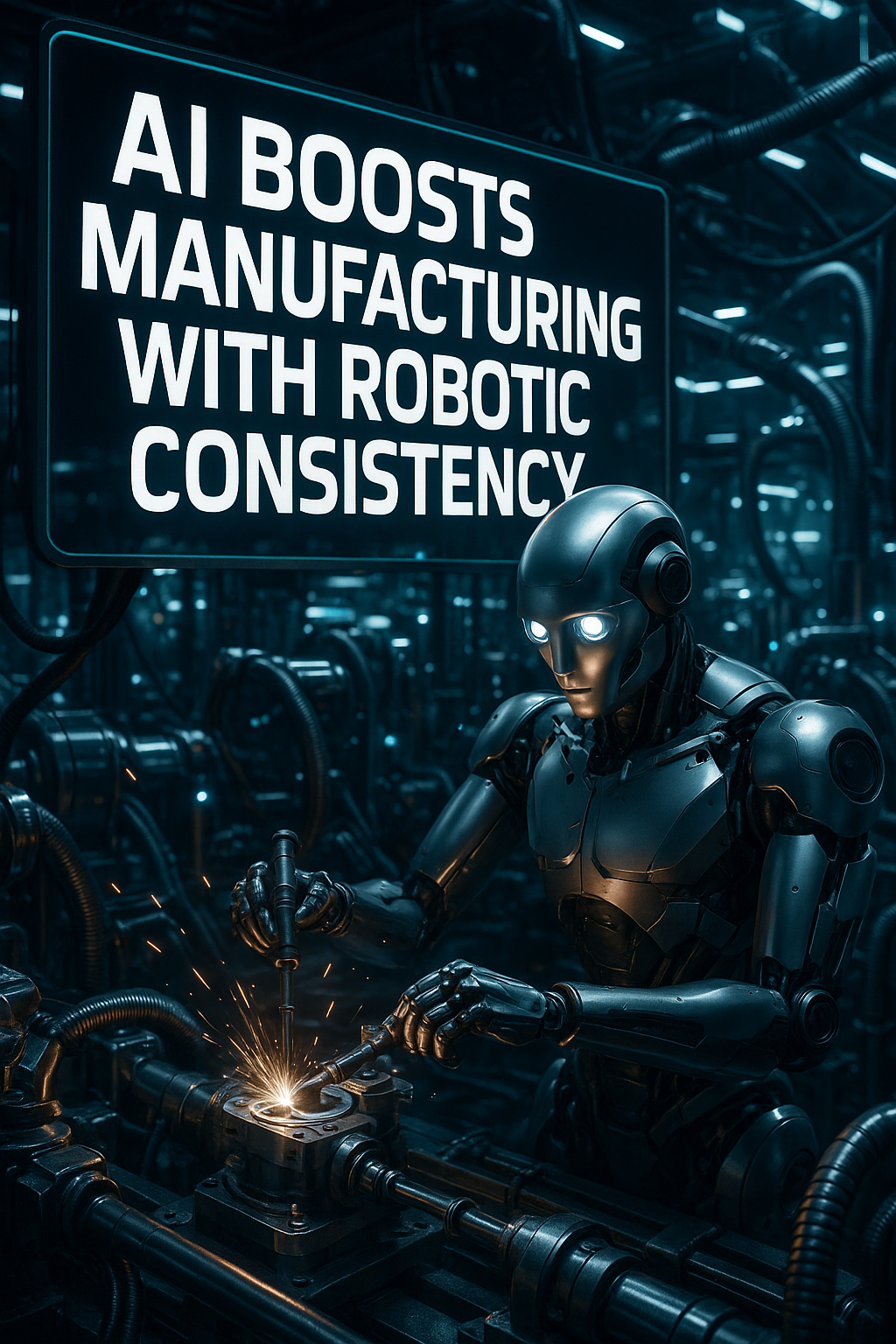
How AI-Powered Robotic Automation Impacts Manufacturing Quality
# Boosting Manufacturing Quality with AI-Powered Robotics: Bridging Gaps and Achieving Excellence
In today’s rapidly evolving manufacturing landscape, the deployment of AI-powered robotic automation is no longer simply advantageous—it’s indispensable. As industries worldwide grapple with chronic labor shortages, innovative solutions that seamlessly marry technology with manufacturing operations are becoming critical. Through cutting-edge robotics integrated with artificial intelligence, companies are not only addressing labor gaps but also enhancing productivity, ensuring consistent quality, reducing waste, and paving the way for continuous process improvements. But how exactly is this technological marvel reshaping the manufacturing sector?
## The Genesis: Filling the Labor Gap
The journey towards robotic automation often begins with addressing the challenging issue of labor shortages. High-mix surface finishing tasks such as sanding, polishing, and grinding demand significant human labor due to their ergonomic challenges, often resulting in high employee turnover. Companies are now finding refuge in AI-powered smart robotic cells designed to replace these laborious tasks. The advanced capabilities of robotic cells, fueled by AI, enable them to autonomously perform complex operations, thereby compensating for human labor shortages effectively.
### Key Benefits of AI-Powered Robotics in Labor-Intensive Tasks
– **Increased Productivity**: Robots can operate tirelessly, thereby boosting production capacity.
– **Ergonomic Relief**: Eliminating repetitive, high-strain jobs reduces the risk of worker injuries.
– **Cost Efficiency**: Traditional robotic solutions often require extensive programming; AI mitigates this by simplifying setup and operation.
– **Flexibility**: Smart robotic cells adapt swiftly to various production lines, enhancing operational flexibility.
“The availability of 3D vision and force sensors allows robots to perform complex operations autonomously.”
## Quality Assurance: An AI Game-Changer
In today’s hyper-competitive market, producing high-quality products is not just a goal—it’s a necessity. Furthermore, product recalls have severe repercussions, including financial losses, reputational damage, and regulatory penalties. Now more than ever, ensuring faultless manufacturing is pivotal. AI-powered robots offer a robust method of achieving uncompromising quality control, thus guarding against costly recalls.
### How Smart Robotics Enhance Quality Assurance
– **Real-Time Data and Recording**: Robots methodically log all relevant metrics during processes, providing a transparent, verifiable audit trail that confirms adherence to quality standards.
– **Integrated Inspection**: Robots can inspect parts mid-process, enabling the construction of digital twins—virtual representations of physical parts—facilitating precise and efficient downstream processing.
– **Proactive Monitoring**: By assessing raw material at the onset, robots can identify anomalies quickly, allowing for timely intervention and ensuring upstream processes are optimized.
Robots, unlike humans, follow pre-defined protocols without variance, minimizing the potential for defects and ensuring each product meets stringent standards. Thus, less rework, less scrap, and ultimately, less waste.
## Learning from Digital Twins: The Path to Continuous Improvement
Manufacturers utilizing robotic cells benefit from the concepts of digital twins. These digital replicas allow manufacturers to conduct virtual experiments, optimizing their processes in a risk-free environment. AI, powered by deep learning, plays a significant role as these models autonomously refine and adjust manufacturing parameters based on incoming data, facilitating continuous process improvements.
### Deep Learning: A Force Multiplier in Defect Detection
Deep learning differentially augments defect detection through its adaptability and learning capabilities, offering a substantial improvement over traditional methods.
– **Data-Driven Enhancement**: By learning directly from raw data, deep learning algorithms detect and classify defects efficiently, whether it involves spotting cracks or distinguishing color variations.
– **Adaptive Correction**: With parameters transferable across networks, customized solutions for specific manufacturing challenges become achievable with minimal data.
“Deep learning algorithms can handle large amounts of data and can learn from vast amounts of training data, making them well-suited to big data applications.”
## Empowering the Workforce: Humans and Robots in Tandem
While the technological prowess of robots is undeniable, human expertise remains invaluable. Yet, training workers to collaborate seamlessly with AI and robotic tools is no small feat, particularly in jobs with high turnover rates. AI-enhanced training programs that provide real-time feedback and learning guidance play a pivotal role here, reducing errors and enhancing human-robot synergy.
“Improved training can prevent human errors and improve overall product quality.”
## Engaging with the Future of Manufacturing
The integration of AI-powered robotics into manufacturing is transforming not just processes, but the entire fabric of how industries operate. As companies continue to leverage these technologies, the question shifts from “why use AI in manufacturing?” to “how can we best implement and expand its use?”
How will your organization embrace the shift towards AI-automated systems in the coming years? By reflecting on this question, manufacturing companies can start strategizing ways to stay ahead, ensuring they not only survive but thrive in this new era of advanced manufacturing. Companies that engage with AI-powered robotics today will be the leaders defining the industry’s tomorrow.
In the coming years, who will rise to the challenge, and how can industry leaders inspire an efficient symbiosis between human skill and robotic precision? It is these questions that will shape the future of manufacturing quality.

